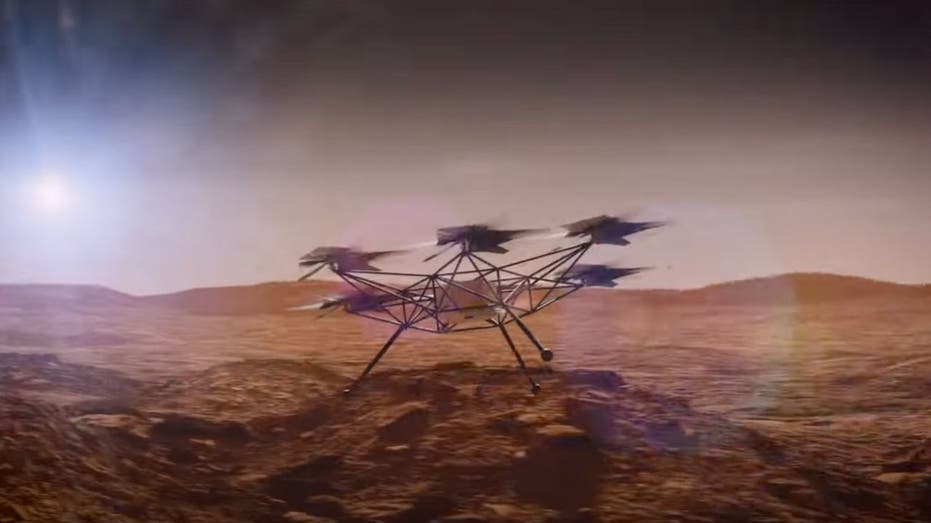
NASA’s Ingenuity: Pioneering Mars Exploration with Aerial Technology
A Historic Milestone in Aerospace Engineering
In April 2021, NASA’s Ingenuity helicopter made aviation history by becoming the first aircraft to achieve powered, controlled flight on Mars. This groundbreaking moment not only showcased human ingenuity but also opened new avenues for scientific exploration of the Red Planet.
The Impressive Journey of Ingenuity
Originally designed for a modest mission comprising just five test flights over the course of 30 days, Ingenuity far exceeded expectations. After nearly three years of operation, this small, solar-powered rotorcraft completed an astonishing 72 flights. Serving as an aerial scout for the Perseverance rover, Ingenuity played a crucial role in gathering valuable data about Mars’ complex terrain and atmospheric conditions.
Throughout its mission, Ingenuity demonstrated remarkable capabilities, including reaching a maximum altitude of 78.7 feet, achieving a top speed of 22.4 mph, and completing an impressive longest flight that spanned over 2,310 feet.
Future Aspirations: Next-Generation Mars Helicopter
Building on the success of Ingenuity, NASA’s Jet Propulsion Laboratory (JPL) is now conceptualizing an advanced Mars helicopter that promises to revolutionize exploration efforts. Currently in the early stages of development, this next-generation aircraft is designed to be significantly larger and more capable than its predecessor.
The proposed helicopter features a hexagonal configuration with six rotors and is expected to be the size of an SUV. With the ability to carry scientific payloads of up to 11 pounds and cover distances of up to 1.9 miles per Martian day, this new vehicle could unlock unprecedented opportunities for scientific research.
Exploring the Benefits of Enhanced Design
The larger size and increased payload capacity of this next-gen helicopter would enable it to conduct extensive scientific investigations in areas that are difficult or impossible for ground-based rovers to access. Scientists would have the opportunity to examine vast regions of Martian terrain in detail and speed, providing insights that were previously out of reach.
Learning from Ingenuity’s Challenges
Before this innovative helicopter can take to the skies on Mars, NASA must tackle the challenges faced by Ingenuity, particularly in navigation. A crash landing in early 2024 highlighted the need for improvements, as Ingenuity’s vision-based navigation system struggled with the featureless terrain of Jezero Crater. NASA engineer Håvard Grip stated, “The lack of surface texture gave the navigation system too little information to work with.”
To address this issue, the next-generation helicopter is expected to incorporate more advanced navigation technologies capable of functioning effectively across various Martian landscapes.
Technological Advancements in Rotor Design
NASA is making significant strides in technology to prepare for the future of Mars helicopters. Engineers at JPL have developed new carbon fiber rotor blades that are four inches longer than those used on Ingenuity. These next-generation blades have been rigorously tested, reaching speeds up to 3,500 rpm—750 rpm faster than Ingenuity’s maximum.
This innovative design promises improved efficiency and performance in Mars’ thin atmosphere, potentially paving the way for even larger and more capable helicopters in upcoming missions. These advancements are vital steps forward in NASA’s ongoing quest to explore the Red Planet from the air.
The Role of Aerial Vehicles in Future Mars Missions
As we anticipate the future of Mars exploration, advanced aerial vehicles like the next-generation helicopter could play a pivotal role in supporting human missions. They offer the unique capability to scout landing sites, study the Martian environment in unprecedented detail, and potentially assist astronauts on the surface.
The rapid evolution of Mars helicopters from Ingenuity’s daring experiment to a robust exploration tool reflects the remarkable progress in space technology.
Join the Conversation on Space Exploration
What are your thoughts on the advancements in Mars exploration, such as the new helicopter? Do you believe these efforts are crucial for expanding our understanding of the universe and the potential for life beyond Earth, or should resources be prioritized for addressing pressing issues on our home planet? We invite you to share your opinions with us.
For more insightful tech tips and security alerts, consider subscribing to our newsletter. Your input matters!

